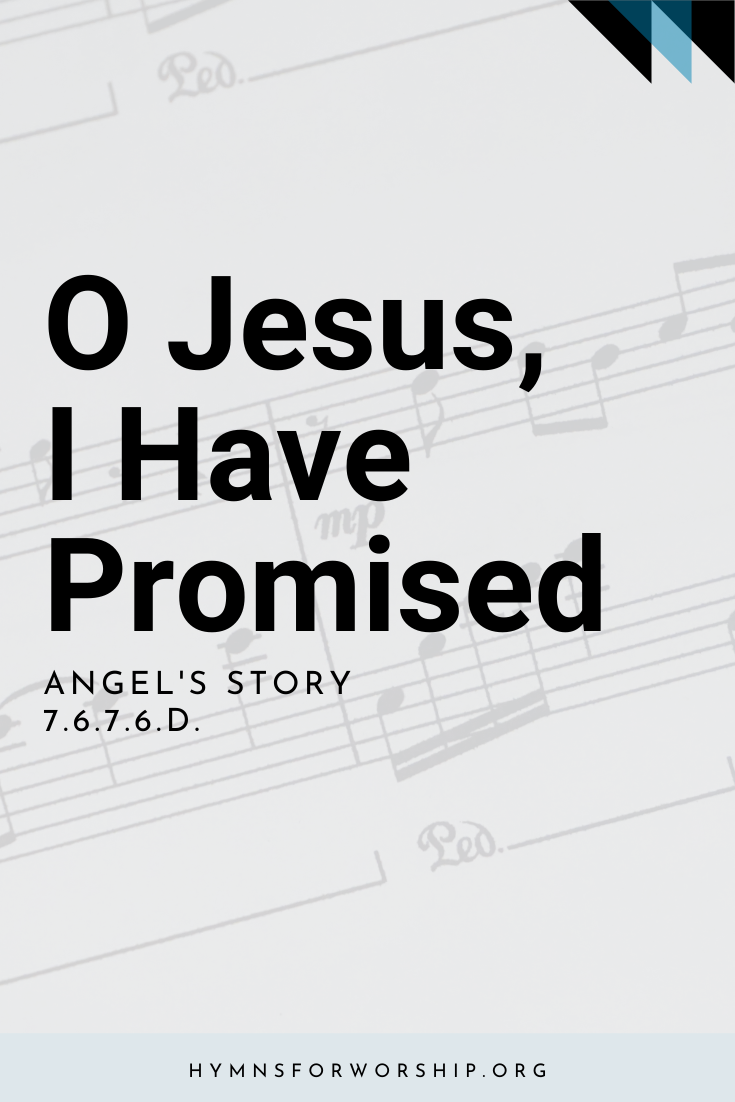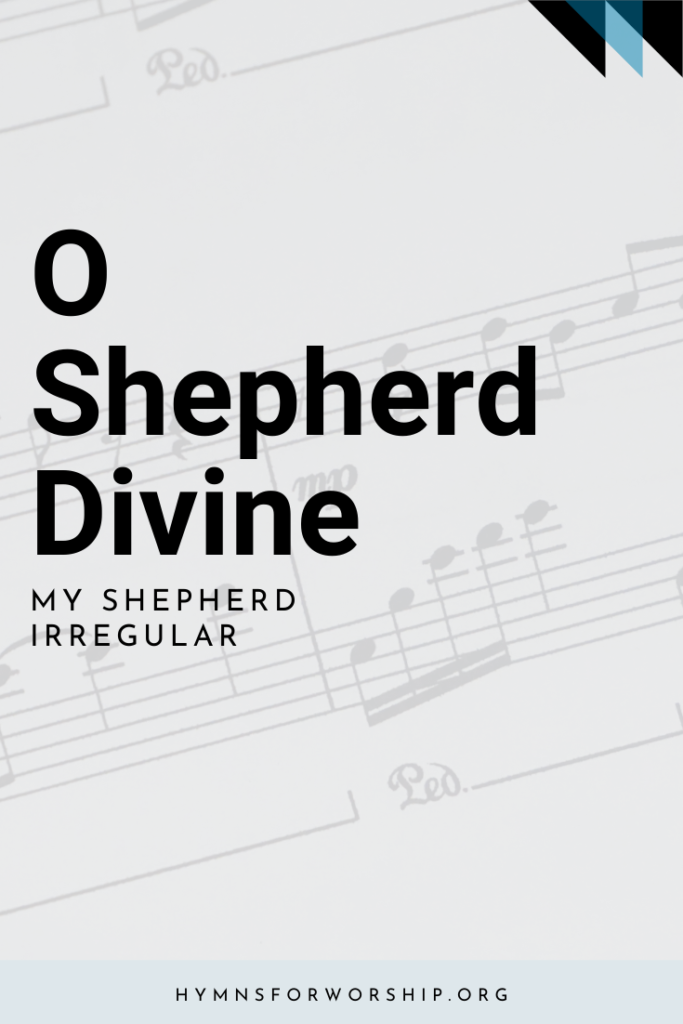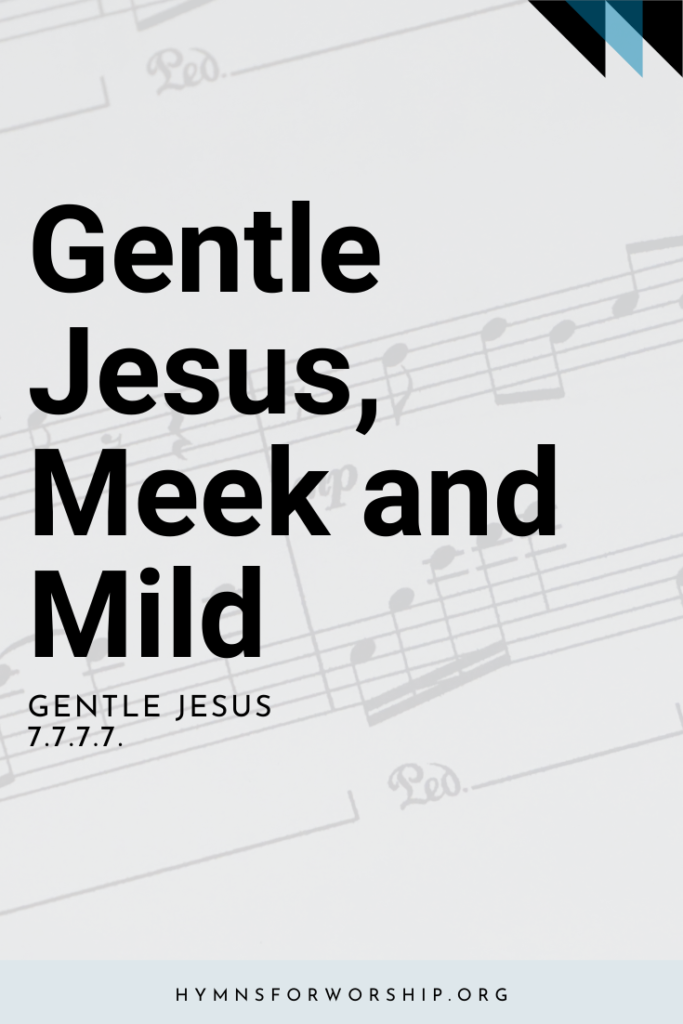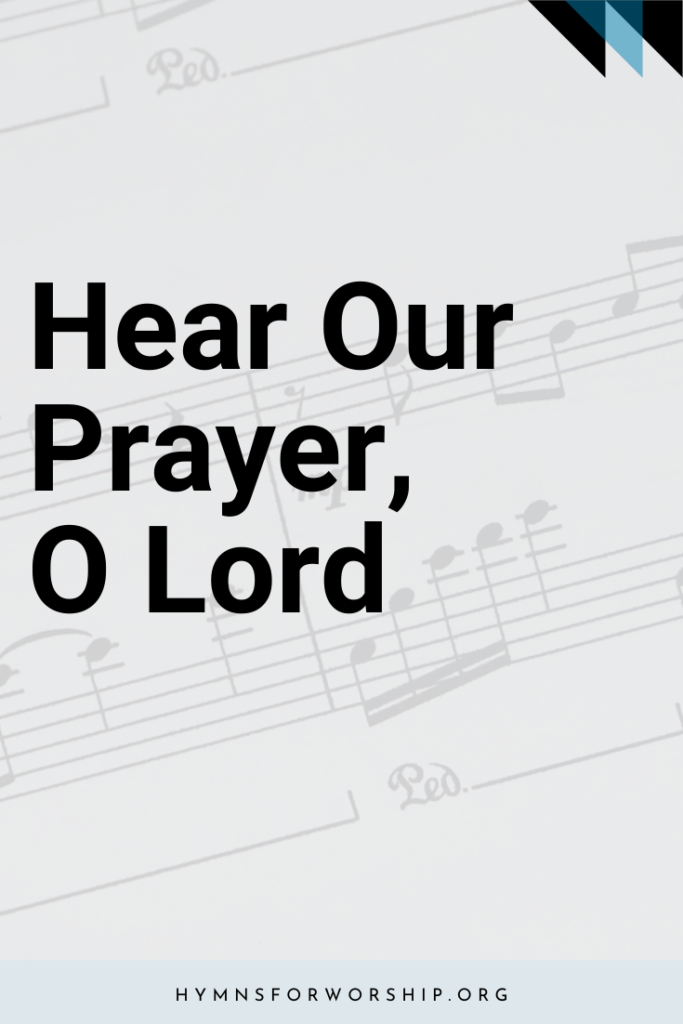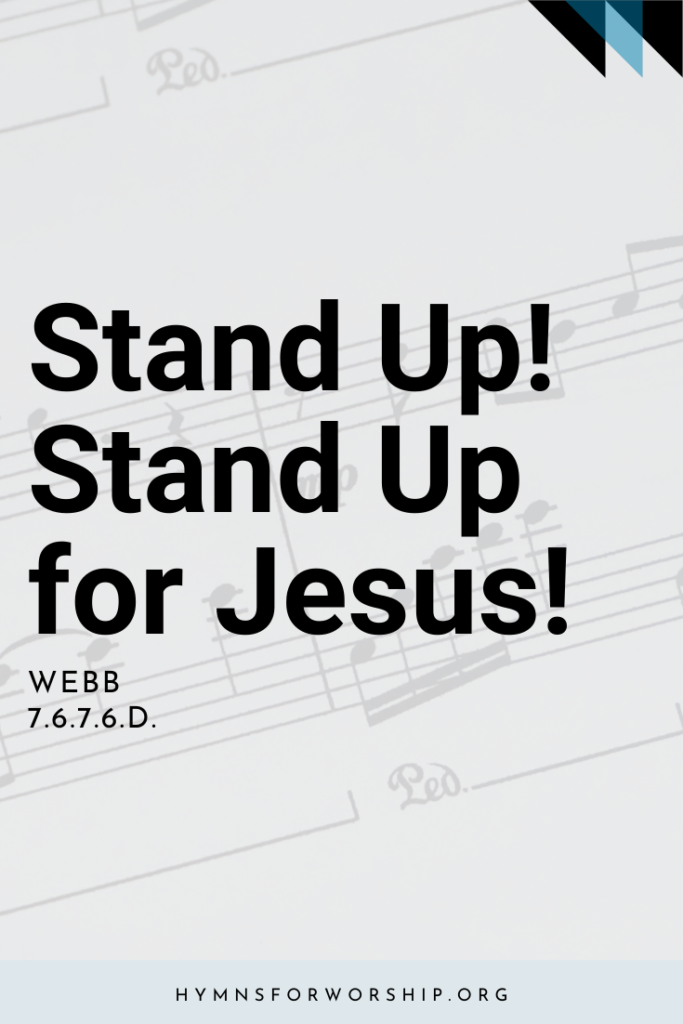GOSPEL >> Consecration
SDAH 331
O Jesus, I have promised
to serve thee to the end;
be thou forever near me,
my Master and my friend.


Text
1
O Jesus, I have promised
to serve thee to the end;
be thou forever near me,
my Master and my friend.
I shall not fear the battle
if thou art by my side,
nor wander from the pathway
if thou wilt be my guide.
2
O let me feel thee near me!
The world is ever near;
I see the sights that dazzle,
the tempting sounds I hear;
my foes are ever near me,
around me and within;
but Jesus, draw thou nearer,
and shield my soul from sin.
3
O Jesus, thou hast promised
to all who follow thee
that where thou art in glory
there shall thy servant be.
And Jesus, I have promised
to serve thee to the end;
O give me grace to follow,
my Master and my Friend.

Hymn Info
Biblical Reference
(b) 1 John 2:16 (c) John 12:26
Author
John E. Bode (1816-1874)
Year Published
1866
Hymn Tune
ANGEL’S STORY
Metrical Number
7.6.7.6.D.
Composer
Arthur H. Mann (1850-1929)
Year Composed
1881
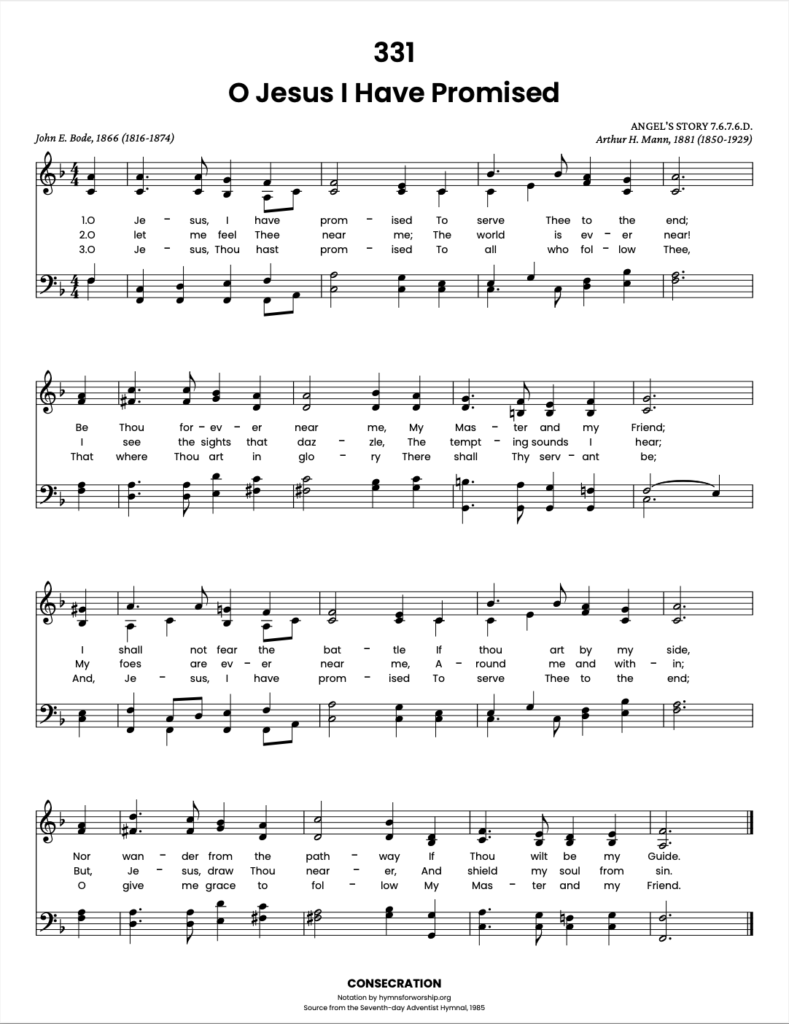
Notes
Make each hymn more meaningful with these helpful tools: Short, ready-to-use hymn introductions for church bulletins, multiple ways to introduce a hymn based on your worship theme and in-depth history and insights to enrich your song service.
Ananias and Sapphira promised to serve Jesus to the end. How did they fail to keep their promise? They coveted the money they pledged for the Lord. It is only as we daily seek grace from Jesus that we may resist self, our worst enemy, and be faithful to the end. (Lesson 9, 1st Quarter 2023, Managing for the Master – Wednesday, “Ananias & Sapphira” 3/1/23)

